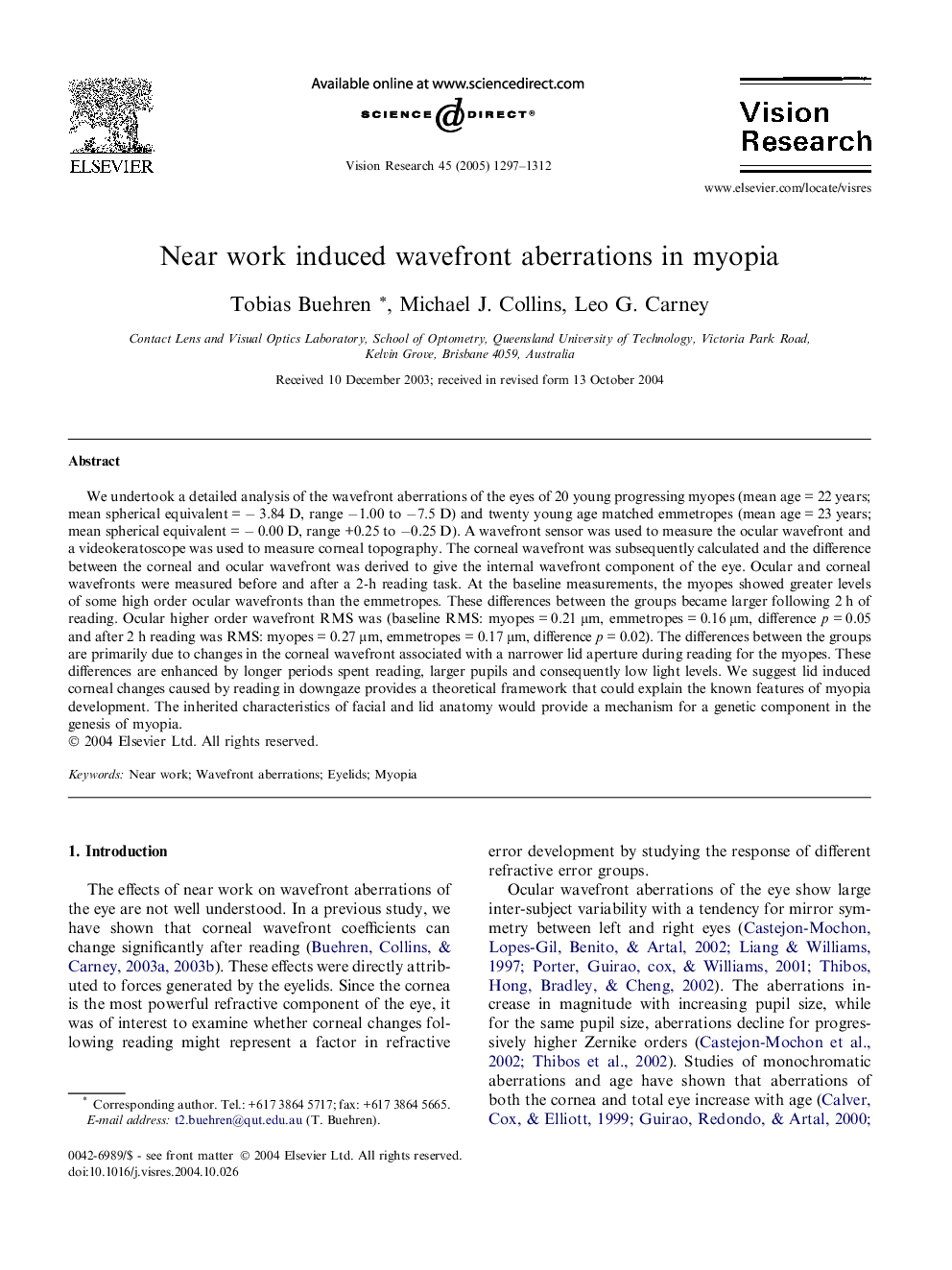| Article ID | Journal | Published Year | Pages | File Type |
|---|---|---|---|---|
| 9348513 | Vision Research | 2005 | 16 Pages |
Abstract
We undertook a detailed analysis of the wavefront aberrations of the eyes of 20 young progressing myopes (mean age = 22 years; mean spherical equivalent = â 3.84 D, range â1.00 to â7.5 D) and twenty young age matched emmetropes (mean age = 23 years; mean spherical equivalent = â 0.00 D, range +0.25 to â0.25 D). A wavefront sensor was used to measure the ocular wavefront and a videokeratoscope was used to measure corneal topography. The corneal wavefront was subsequently calculated and the difference between the corneal and ocular wavefront was derived to give the internal wavefront component of the eye. Ocular and corneal wavefronts were measured before and after a 2-h reading task. At the baseline measurements, the myopes showed greater levels of some high order ocular wavefronts than the emmetropes. These differences between the groups became larger following 2 h of reading. Ocular higher order wavefront RMS was (baseline RMS: myopes = 0.21 μm, emmetropes = 0.16 μm, difference p = 0.05 and after 2 h reading was RMS: myopes = 0.27 μm, emmetropes = 0.17 μm, difference p = 0.02). The differences between the groups are primarily due to changes in the corneal wavefront associated with a narrower lid aperture during reading for the myopes. These differences are enhanced by longer periods spent reading, larger pupils and consequently low light levels. We suggest lid induced corneal changes caused by reading in downgaze provides a theoretical framework that could explain the known features of myopia development. The inherited characteristics of facial and lid anatomy would provide a mechanism for a genetic component in the genesis of myopia.
Related Topics
Life Sciences
Neuroscience
Sensory Systems
Authors
Tobias Buehren, Michael J. Collins, Leo G. Carney,
